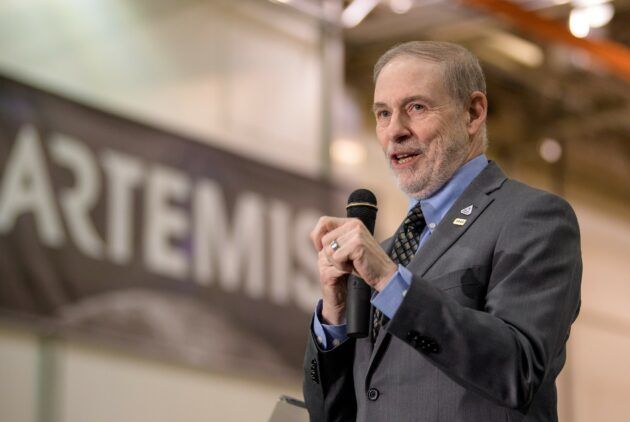Days before landmark launch, NASA’s head of human spaceflight quits due to ‘mistake’

NASA’s top executive concentrating on human spaceflight, Doug Loverro, has resigned just a week before the scheduled start of a milestone space mission.
Loverro became NASA’s associate administrator for human exploration and operations last December, and was playing a leading role in NASA’s Artemis moon program as well as preparations for next week’s launch of a SpaceX Crew Dragon mission to the International Space Station.
That mission, set for liftoff on May 27 from NASA’s Kennedy Space Center in Florida, is due to send NASA astronauts Doug Hurley and Bob Behnken to the station for a stay that could last as long as four months. It’ll be the first launch of an orbital crewed mission from U.S. soil since the retirement of NASA’s space shuttles in 2011.
For nearly nine years, NASA has had to rely on the Russians to get American astronauts to the space station. If all goes according to plan, the SpaceX launch will end that era next week.
Loverro had been scheduled to preside over a launch readiness review on Thursday, but The Washington Post reported that NASA associate administrator Steve Jurczyk will take Loverro’s place. In a statement, NASA said former astronaut Ken Bowersox, who served as acting chief of human spaceflight before Loverro took over last year, will return to that role on an acting basis.
In an email that Loverro sent to NASA employees, he said he was leaving the agency due to a mistake he made during his tenure, but did not elaborate on the nature of the mistake.
“The risks we take, whether technical, political, or personal, all have potential consequences if we judge them incorrectly. I took such a risk earlier in the year because I judged it necessary to fulfill our mission,” Space News quoted the email as saying. “Now, over the balance of time, it is clear that I made a mistake in that choice for which I alone must bear the consequences.”
Loverro told The Washington Post that his departure had nothing to do with the commercial crew program, which involves SpaceX as well as Boeing. He said “it was absolutely safe to proceed” with the SpaceX launch.
“It had to do with moving fast on Artemis, and I don’t want to characterize it in any more detail than that,” Loverro told the Post.
One of the most important decisions that NASA made during Loverro’s tenure was to select commercial teams to move forward with the development of landing systems capable of putting astronauts on the moon by as early as 2024. Loverro had been fixed on the 2024 date, to the extent that he wore a custom-made lapel pin that displayed the number of days remaining until the end of 2024.
Three weeks ago, NASA announced that three companies would win support for lunar lander development: a team led by Blue Origin, the Kent, Wash.-based space venture founded by Amazon CEO Jeff Bezos; a team led by Dynetics, an Alabama-based aerospace company; and SpaceX, which proposed its Starship super-rocket.
SpaceX is an interesting choice for a couple of reasons. The Starship system is being developed in-house, and doesn’t rely on other major contractors or on NASA’s heavy-lift Space Launch System rocket.
It’s also being developed on an ambitious schedule: SpaceX executives have talked about starting Starship missions to the moon by 2022.
In an assessment of lunar lander proposals, Jurczyk said SpaceX’s plan came with significant risks, due to Starship’s “notably complex” propulsion system and the company’s record of “considerable schedule delays.”
NASA’s decision was also notable for a company that wasn’t chosen: Jurczyk said Boeing’s lunar lander proposal, which relied heavily on technology developed for the Space Launch System and the company’s Starliner space taxi, was passed over early in the selection process.
Speaking on condition of anonymity, sources have told GeekWire and other media outlets that Loverro’s mistake may have had to do with the procurement process for lunar landing systems. In March, the NASA Office of the Inspector General announced that it would audit the acquisition strategy for the Artemis program, including plans to land astronauts on the moon by 2024.
https://ca.news.yahoo.com/nasa-head-human-spaceflight-bows-225246383.html
